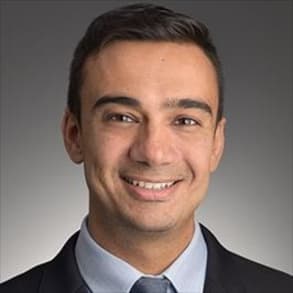Amin Yehya, M.D., discusses the findings of the published article, “Is it time to revisit ICD indications?”, and how advances in medical management may necessitate changes to the current ICD recommendations.
Click here to read more.
I'm Doctor Armenia. I'm the director of the M. C. S. Program at Sentara Norfolk General Hospital. We're gonna talk about today. Our recent publication in the heart failure review journal. Um It's about uh is it time to review the I. C. D. Indications? Um This article was recently published and it raises the question whether with our current guideline directed medical therapy should we reconsider the timing for I. C. D. Implant in the past? Uh I. C. D. S. Have been approved by the Heart fair Society and communities to reduce the risk of sudden cardiac death. And most of the trials have been conducted for I. C. D. S and get I. CE approved. We're done in patients on what we call guideline directed medical therapy and therapy at that time was based upon beta blockers and ace inhibitors or angiotensin receptor blockers. But if in the past 5 to 10 years we've seen a lot of advancement in the heart failure world. We have multiple medications now that have shown to improve survival quality of life and also improvement in the ejection fraction. Record the squeeze of the heart muscle of these patients in the past. What the recommendations are are if somebody's ejection fraction is less than 35% on what we have called guideline therapy and their ejection fraction remains low despite being on therapies, these patients are referred to electrophysiology to have an I. C. D. Implanted as primary prevention which is reduced risk of sudden cardiac death. But as I mentioned in the past years we have multiple medications such as the curator of all Certain, which was a big revolution in the heart failure world, where it's the first medication that has been approved after years and years that have shown to improvement in cardiac survival and quality of life of these patients. Not just that in the past year. Also, we noticed that the ejection fraction or the squeeze of the heart muscle improves with secure butterball. Certain other medical medication has been approved a long time ago for patients with diabetes. We call them as G. L. T two inhibitors such as Mpeg workflows. In order. Capital flows in these medications in a multiple trials have been approved recently have shown that to improve survival and overall outcomes in patients with heart failure independent of their diabetes status. So it can be patients with heart failure without diabetes. But if you're placed on these medications it can improve your cardiovascular outcomes. And when they noted when patients are all all these medications such as beta blocker, um sacramento, val, certain minerality, cortical receptor antagonist such as spironolactone or better known. And as the altitude inhibitors such as antigua flows and flows in these patients live longer and feel better and there are chances of the risk of sudden cardiac death is significantly reduced than patients on only beta blocker or ace inhibitor or A R. Bs. And as we mentioned before, patients in the past where the eye CDS were approved our own patients only on beta blockers and I see a C. Inhibitors and A. R. Bs. So now we have four different medications that can improve survival, improved quality of life, improved ejection fraction of the patients. So I think it's a great time to start thinking about. Is it a good time to revisit the guidelines? Should we potentially be extending the timeframe to receive an I. C. D. Because again from my personal experience and my colleagues across the nation we noticed that patients ejection fraction has improved with medical therapy and we could have spared maybe many other patients from receiving I. C. D. S if we waited a month or two or three definitely. We're not saying that there is no role for I. C. D. S. No I C. D. S remain important and basic in helping reduce risk of sudden cardiac death. What we're arguing for is that should we be looking at different criteria that we need to reconsider before official referring patients to implant an I. C. D.
Related Presenters
